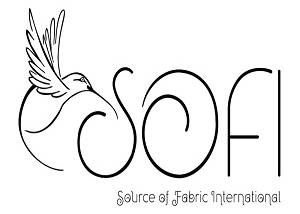To make their garments feel softer and smell better, many individuals employ fabric softening, a standard laundry care technique. However, what is fabric softening exactly, and how does it function? This post will go over the advantages, how-tos, and advice to help you get the most out of your fabric-softening regimen.
How does fabric softening work?
The technique of treating fabrics to increase their softness and decrease static cling is known as “fabric softening.” There are a number of ways to accomplish this, such as using dryer sheets, liquid fabric softeners, or even natural substitutes. By coating the fabric’s fibers, fabric softeners make the material feel smoother against your skin.
Fabric Softener: Why Use It?
People decide to use fabric softener in their laundry for a number of reasons:
Softness: The most evident advantage is the extra softness it gives your linens, towels, and clothing. As a result, they are now more comfortable to use or wear.
Decreased Static Cling: During the dry winter months, garments might cling to one another due to static electricity. Fabric softeners lessen the severity of this issue.
Easier Ironing: Ironing softened materials is frequently less difficult. Additionally, they can lessen creases, giving your clothing a more put-together appearance with no effort.
Fresh Fragrance: A lot of fabric softeners have enticing aromas that can leave your clothes smelling clean and new.
Extended Fabric Life: Fabric softeners can help shield your garments from deterioration and lengthen their life by lowering friction during washing and drying.
How Fabric Softener Is Used
Generally speaking, using fabric softener is simple, but depending on the kind you select, there are a few different techniques. This is an explanation:
1. Fabric Softening Liquid
How to Use: Fabric softeners usually have their own compartments in washing machines. During the rinse cycle, add the recommended amount of liquid softener (typically denoted by a symbol on the machine).
Dosage: Consistently adhere to the directions on the container. Excessive use might cause accumulation on both the laundry machine and your clothing.
2. Sheets for dryers
How to Use: Just place your damp garments in the dryer with a dryer sheet. It functions by allowing fabric-softening chemicals to be released while the fabric dries.
Convenience: Since dryer sheets may be used for every load and you don’t need to measure anything, they are convenient.
3. Balls for dryers
How to Use: These are a natural substitute for fabric softeners and are frequently made of rubber or wool. Simply put your clothes in the dryer with a couple of dryer balls.
Advantages: They soften the textiles and aid in separating garments, which increases the amount of hot air that circulates and speeds up the drying process.
4. Organic Substitutes
Many natural fabric softeners are available if you’d rather take a more environmentally responsible route. These include:
White Vinegar: Without using harsh chemicals, soften fabrics and minimize static by adding a cup of white vinegar to the rinse cycle.
Baking Soda: To keep clothes supple, try adding baking soda to your laundry.
Essential Oils: You can mix vinegar, water, and a few drops of your preferred essential oil to make your own homemade fabric softener. Your clothes will soften and smell fantastic after doing this.
Some Advice for Successful Fabric Softening
Avoid Overdoing It: Using too much fabric softener might cause your garments to become sticky and cause buildup within your washing machine. Follow the suggested dosages.
Examine the labels: Fabric softeners are not necessary for certain textiles, such as sportswear and microfiber. Actually, utilizing them may lessen their efficacy, so be sure to read the care directions before using them.
Frequent Machine Cleaning: Your washing machine may retain residue from fabric softeners. To keep your laundry fresh and your machine operating properly, give it a regular cleaning.
Try this: Everyone has a varied taste in aroma and softness. To choose which fabric softener is best for you, try a variety of brands.
In summary
To make your clothes, towels, and linens more comfortable and long-lasting, try fabric softening. There are several options to fit your needs, whether you choose with dryer sheets, liquid fabric softeners, or natural substitutes. You may have softer, fresher laundry after every wash by knowing how to use these products properly and by paying attention to a few easy guidelines. Cheers to happy laundry!


